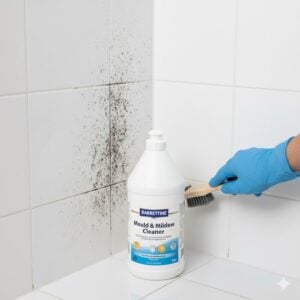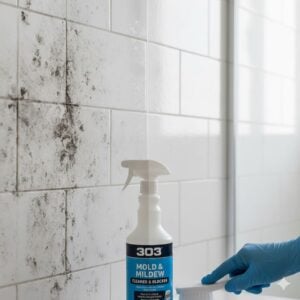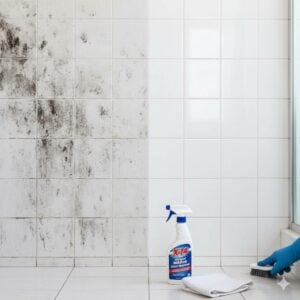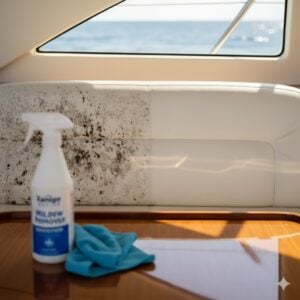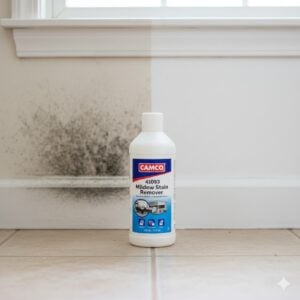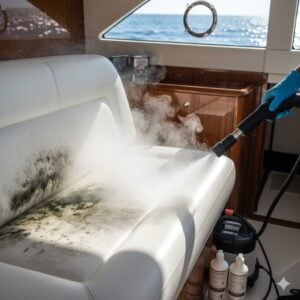Mold on your walls is more than just an eyesore—it’s a health hazard, a signal of hidden moisture problems, and a threat to your home’s structure. In the UAE, where high humidity and constant air conditioning create the perfect breeding ground, this issue is far more common than many homeowners expect.
In this guide, we explain the real causes of mold on walls, how to treat it effectively, and how you can keep your home mold-free for good. Whether it’s a small patch in the corner or black streaks behind your furniture, here’s what you need to know to stop it at the source.
Table of Contents
Toggle1. What Causes Mold to Grow on Walls?
Mold spores are always present in the air, but they need moisture to grow. In Dubai, Abu Dhabi, and other UAE cities, the most common triggers for mold on walls include:
- Condensation from air conditioning: Cold walls meeting warm indoor air create moisture buildup.
- Poor ventilation: Bathrooms, kitchens, and storerooms without airflow trap humidity.
- Water leaks: From AC pipes, water tanks, or behind walls can go unnoticed for weeks.
- Improper construction: Some buildings have poor insulation or waterproofing, leading to damp surfaces.
Once mold starts growing on a wall—especially behind furniture or in corners—it can spread fast. And if left untreated, it can seep into paint layers, drywall, or even concrete pores.
2. How to Identify Mold on Walls
Not all stains on the wall are mold, but here are signs to watch for:
- Musty smell: Even before you see it, mold gives off a distinct earthy odor.
- Black, green, or brown spots: Often in irregular patches, spreading outward slowly.
- Wall paint bubbling or peeling: A clear sign moisture is trapped underneath.
- Health symptoms: Frequent sneezing, coughing, or skin irritation in one room only.
If you suspect the presence of mold but can’t see it clearly, a surface swab or air quality test can confirm it. Bio-On offers onsite mold testing services across the UAE, which help detect both visible and hidden mold contamination.
3. Step-by-Step Mold Treatment for Walls

When treating mold on walls, the goal is to remove the spores, kill their roots, and stop them from returning. Here’s the proper approach:
Step 1: Inspect and Identify the Source
Cleaning visible mold without addressing the root cause (leak, humidity, etc.) is useless. Begin by finding out what’s causing the moisture.
Step 2: Clean the Surface Thoroughly
For minor mold, a mixture of vinegar or hydrogen peroxide may work. For heavy infestations or black mold, use commercial-grade mold removers or get professional help. Always wear gloves and a mask.
Step 3: Kill the Mold Roots
Even if you wipe off the surface stain, spores can stay behind. Sprays with fungicidal agents help penetrate porous surfaces. Bio-On’s team uses professional-grade fogging and HEPA vacuuming equipment to ensure complete elimination.
Step 4: Dry the Wall Completely
Use dehumidifiers or fans to make sure the wall is 100% dry before repainting or sealing. Moisture left inside can restart the problem.
Step 5: Apply Mold-Resistant Coating
Use anti-mold primer or mold proof paint to block spore regrowth. These coatings are especially useful in humid rooms like bathrooms or storerooms.
You can follow these steps for DIY treatment in small areas, but if the mold is more than 1 sq.m., professional remediation is highly recommended—both for safety and long-term results.
4. Professional Mold Treatment Services in UAE
Professional treatment ensures every layer of contamination is handled, especially if the mold has spread behind paint or into gypsum walls. At Bio-On UAE, we use municipality-authorized methods that meet international standards for safe mold removal.
Here’s what you can expect from our process:
- Free on-site inspection for areas larger than 10 sq.m.
- Thermal imaging and moisture detection to find hidden mold.
- HEPA vacuuming to trap and eliminate airborne spores.
- Dry fogging or chemical spraying to kill mold in hard-to-reach spaces.
- Post-treatment sealing and painting to prevent reoccurrence.
Prices start at AED 35/sq.m. for small areas, with discounts for larger jobs. Advanced lab tests like air quality analysis or mycotoxin detection are also available for AED 1000 per test if needed.
5. How to Prevent Mold from Returning
Treatment is only part of the solution—prevention is where you protect your home long-term. Here’s how:
- Keep indoor humidity under 60%: Use a hygrometer and dehumidifier if necessary.
- Ventilate closed rooms: Open windows, use exhaust fans, or install air circulation systems.
- Fix leaks quickly: Even small drips can create massive wall mold over time.
- Leave space behind furniture: Mold often hides in low-airflow zones.
- Use mold-resistant materials: Especially in kitchens, bathrooms, and basements.
These small changes make a huge difference—especially in UAE’s climate, where a cool but unventilated room is the perfect mold trap.
Conclusion
Mold on your walls won’t go away on its own—and if ignored, it can damage your health, your paint, and your peace of mind. But with the right treatment plan and ongoing prevention, you can stop it for good.
We hope this guide helps you understand how serious wall mold can be and how to deal with it effectively. If you need help identifying or treating mold in your UAE home, just click the contact button on the right-middle of this post and we’ll get you sorted—fast, safe, and with no pressure.








